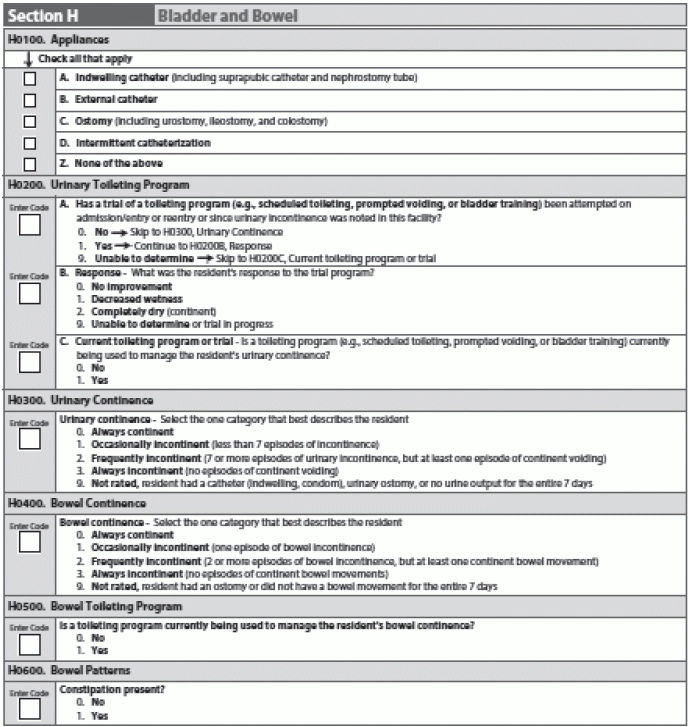What to do if you’re looking for ‘fecal impaction’ in this section.
Section H (Bladder and Bowel) isn’t a particularly difficult MDS 3.0 section to code, but it does have a few areas where you can make serious mistakes if you’re not being careful. And because incontinence is such an important issue to your residents and their care plans, you really need to get each and every item in Section H right.
“Each resident who is incontinent of urine or at risk for being incontinent of urine really needs to be assessed thoroughly,” Rena Shephard, owner of RRS Healthcare Consulting Services in San Diego, said in a recent Centers for Medicare & Medicaid Services (CMS) instructional session. “And that assessment [is] not just a matter of determining through a 72-hour observation period that the person is incontinent … and developing a care plan.”
Important: “We cannot even begin to know what the proper interventions are for a particular resident to foster continence or prevent incontinence in somebody who’s at risk until we know the root cause of the incontinence,” Shephard noted. “And once you drill all the way down and you find that root cause, then you start being able to understand what it is that you need to do to either eliminate the problem altogether or at least mitigate it.”
1. Don’t Ignore the Skip Patterns
Pay close attention to the skip patterns in H0200 —Urinary Toileting Program, and don’t let them trip you up. “It’s very important to follow the skip patterns,” Shephard stressed.
“Have you ever noticed that we haven’t been very good at skip patterns? You notice that people tend to fill out items that are intended to be skipped,” Shephard pointed out. But you can’t afford to do that because you would fill out a ton of items that you don’t need to.
2. Consider the Most Recent Occurrence to Code H0200A
Pay attention: H0200A is: “Has a trial of a toileting program (e.g., scheduled toileting, prompted voiding, or bladder training) been attempted on admission/entry or reentry or since urinary incontinence was noted in this facility?”
The response to H0200A should refer to whichever one occurred most recently, stated Shephard. “Admission or reentry, or the resident might have come into the facility continent at some point and then became incontinent of urine, so that would be where you’re looking back to.”
3. Adhere to the Look-Back Period for H0300 & H0400
Remember that the look-back period for H0300 — Urinary Continence and H0400 — Bowel Continence is seven days, Shephard instructed. “It’s looking at the number of episodes in the seven-day look-back period.”
4. Don’t Look for ‘Fecal Impaction’ in H0600
You might’ve noticed that in the MDS 3.0, the term “fecal impaction” isn’t included in Section H. But don’t let that confuse you.
What to do: “If a resident had fecal impaction in the seven-day look-back period, the answer to H0600 is ‘Yes.’ Constipation was present,” Shephard explained. “Because an impaction is the result of constipation.”

